Resident Crews of the International Space Station (ISS)
![]()
ISS: Expedition 47 |
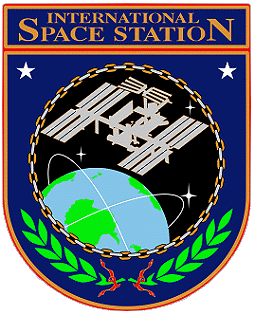 |
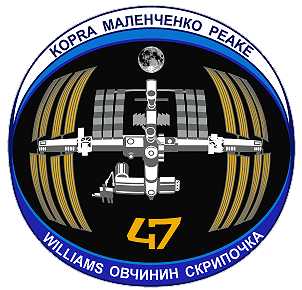 |
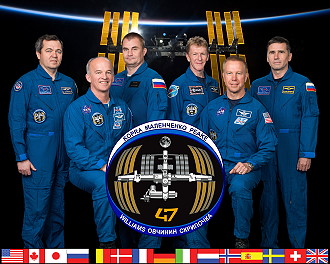 |
alternative crew photo |
|
alternative crew photo |
|
alternative crew photo |
|
alternative crew photo |
|
alternative crew photo |
|
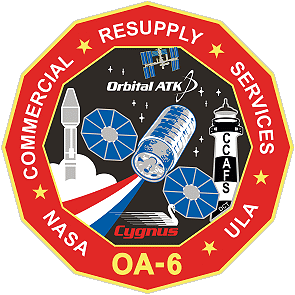 |
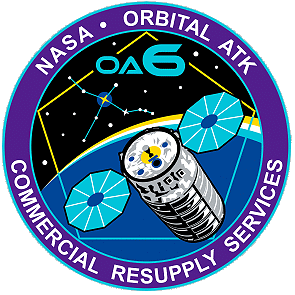 |
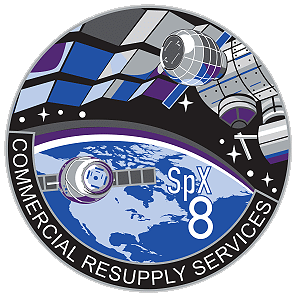 |
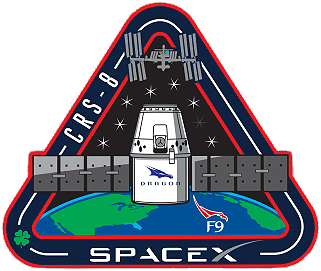 |
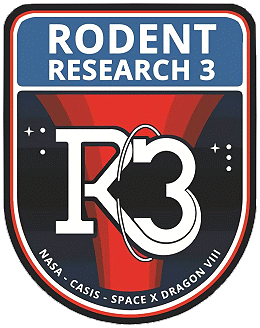 |
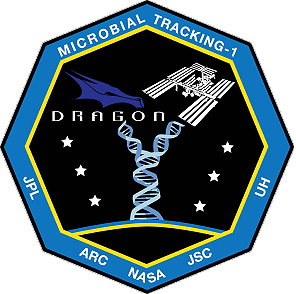 |
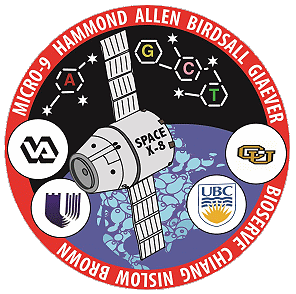 |
![]()
Crew, launch- and landing data
| No. | Nation | Surname | Given names | Position | Spacecraft (launch) |
Launch date |
Launch time |
Spacecraft (landing) |
Landing date |
Landing time |
Mission duration |
Orbits |
| 1 | Kopra | Timothy Lennart | ISS-CDR | Soyuz TMA-19M | 15.12.2015 | 11:03:09.328 UTC | Soyuz TMA-19M | 18.06.2016 | 09:15:06,3 UTC | 185d 22h 11m 57s | 2893 | |
| 2 | Ovchinin | Aleksei Nikolaevich | Flight Engineer-1 | Soyuz TMA-20M | 18.03.2016 | 21:26:38.355 UTC | Soyuz TMA-20M | 07.09.2016 | 01:13:35.0 UTC | 172d 03h 46m 57s | 2679 | |
| 3 | Skripochka | Oleg Ivanovich | Flight Engineer-2 | Soyuz TMA-20M | 18.03.2016 | 21:26:38.355 UTC | Soyuz TMA-20M | 07.09.2016 | 01:13:35.0 UTC | 172d 03h 46m 57s | 2679 | |
| 4 | Williams | Jeffrey Nels | Flight Engineer-3 | Soyuz TMA-20M | 18.03.2016 | 21:26:38.355 UTC | Soyuz TMA-20M | 07.09.2016 | 01:13:35.0 UTC | 172d 03h 46m 57s | 2679 | |
| 5 | Malenchenko | Yuri Ivanovich | Flight Engineer-4 | Soyuz TMA-19M | 15.12.2015 | 11:03:09.328 UTC | Soyuz TMA-19M | 18.06.2016 | 09:15:06,3 UTC | 185d 22h 11m 57s | 2893 | |
| 6 | Peake | Timothy Nagel | Flight Engineer-6 | Soyuz TMA-19M | 15.12.2015 | 11:03:09.328 UTC | Soyuz TMA-19M | 18.06.2016 | 09:15:06,3 UTC | 185d 22h 11m 57s | 2893 |
unofficial Backup Crew
| No. | Nation | Surname | Given names | Position |
| 1 | Rubins | Kathleen Hallisey "Kate" | ISS-CDR | |
| 2 | Ryzhikov | Sergei Nikolaevich | Flight Engineer | |
| 3 | Borisenko | Andrei Ivanovich | Flight Engineer | |
| 4 | Kimbrough | Robert Shane | Flight Engineer | |
| 5 | Ivanishin | Anatoli Alekseyevich | Flight Engineer | |
| 6 | Onishi | Takuya | Flight Engineer |
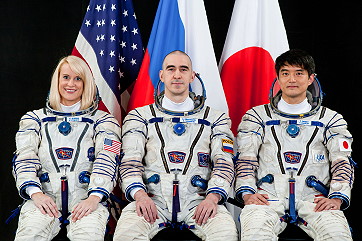 |
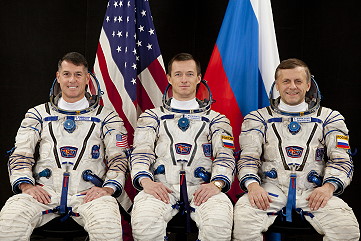 |
 |
Expedition Report
|
ISS Expedition 47 began with the undocking of
spacecraft Soyuz TMA-18M on March 02, 2016 at 01:02:48
UTC. The former Expedition 46 (Sergei
Volkov, Mikhail
Korniyenko and Scott
Kelly) returned safely to Earth. Following an only six hours solo flight Soyuz TMA-20M docked to ISS on March 19, 2016. Aleksei Ovchinin, Oleg Skripochka and Jeffrey Williams became the ISS Expedition 47 (together with ISS Expedition 46 crew members Timothy Kopra, Yuri Malenchenko and Timothy Peake). With the arrival Expedition 47 became a six-person-crew. Orbital ATK's Cygnus OA-6 "S.S. Rick Husband" transporter launched on a United Launch Alliance Atlas V rocket from Space Launch Complex 41 at the Cape Canaveral Air Force Station (CCAFS) in Florida on March 23, 2016 at 03:05:52 UTC. The spacecraft carried crew supplies and vehicle hardware to the orbital laboratory to support the Expedition 47 and 48 crews. Cygnus carried almost 7,500 pounds (3,400 kg) of science and research, crew supplies and vehicle hardware to the orbital laboratory to support dozens of science and research investigations that will occur during Expeditions 47 and 48. The new experiments will inspire future scientists and explorers, with experiments such as an investigation that looks at the properties and behavior of regolith, or "soil" found on asteroids, comets, the moon, and other airless worlds; an instrument for the first-ever, space-based observations of the chemical composition of meteors entering Earth's atmosphere; a technology demonstration of an adhesive device that can stick on-command in the harsh environment of space; and, the second generation of a portable onboard 3-D printer, among others; Saffire-I provides a new way to study a large fire on an exploration craft, which has not been possible in the past because the risks for performing such studies on spacecraft with astronauts aboard are too high. Meteor will enable the first space-based observations of meteors entering Earth's atmosphere from space. Strata-I could give us answers about how regolith behaves and moves in microgravity, how easy or difficult it is to anchor a spacecraft in regolith, how it interacts with spacecraft and spacesuit materials, and other important properties. The Gecko Gripper study tests a gecko-inspired adhesive gripping device that can stick on command in the harsh environment of space. The Additive Manufacturing Facility will add an upgraded 3-D printing capability to the station. The spacecraft arrived at the station on March 26, 2016 at which time Expedition 47 Commander Timothy Kopra and Flight Engineer Timothy Peake grappled Cygnus, using the space station's robotic arm Canadarm2. After Cygnus capture at 10:51 UTC, ground commands sent from mission control in Houston to the station's arm to rotate and install the spacecraft on the bottom of the station's Unity module. The freighter was berthed at 14:52 UTC The Progress M-29M cargo vehicle, currently docked at the aft port of the Zvezda Service Module, left the station on March 30, 2016 at 14:15:30 UTC. The freighter was docked since October 01, 2015. Loaded with trash, the older Progress will be used for engineering tests before it is deorbited on April 08, 2016 to burn up over the Pacific Ocean. The unmanned Progress MS-02 cargo ship launched from the Baikonur Cosmodrome in Kazakhstan on March 31, 2016 at 16:23:57.351 UTC on a two-day trip to deliver more than 2,400 kg of food, fuel and supplies to the station's Expedition 47 crew. Among the hardware is the microsatellite "Tomsk-TPU-120", created with the use of 3D-printers. "Tomsk-TPU-120" is a small, but full-fledged spacecraft with solar panels, batteries, on-board radio equipment. Progress MS-02 docked to the Zvezda Service Module of the International Space Station on April 02, 2016 at 17:57:45 UTC. The two-day rendezvous for the Progress is deliberately planned to enable Russian flight controllers to test new software and communications equipment for the new vehicle configuration that will be standard for future Progress and piloted Soyuz spacecraft. The Progress spent more than six months at the station before departing on October 14, 2016 for it's deorbit into the Earth's atmosphere during which it will burn up over the Pacific Ocean. The SpaceX's Dragon capsule CRS-8 or SpX-8 launched on April 08, 2016 at 20:43:31 UTC on a Falcon 9 rocket from Space Launch Complex 40 at Cape Canaveral Air Force Station (CCAFS) in Florida, carrying science research, crew supplies and hardware to the orbiting laboratory in support of the Expedition 47 and 48 crews. The new experiments arriving to the station will help investigators study muscle atrophy and bone loss in space, use microgravity to seek insight into the interactions of particle flows at the nanoscale level and use protein crystal growth in microgravity to help in the design of new drugs to fight disease. The flight also included the Bigelow Aerospace expandable habitat module that will be attached to the space station for testing. In its scheduled return to Earth in May 2016, the Dragon capsule will bring back biological samples from astronauts, including those collected during the 11-month-mission of an US astronaut and a Russian cosmonaut ("one-year mission"). This launch is the eighth contracted mission by SpaceX under NASA's Commercial Resupply Services contract. The spacecraft arrived at the station on April 10, 2016 at which time Jeffrey Williams and Timothy Peake used the station's robotic arm Canadarm2 to capture the Dragon spacecraft at 10:23 UTC. Ground commands were sent from Houston to the station's arm to install Dragon on the bottom side of the Harmony module for its stay at the space station (13:57 UTC). On April 13, 2016 new series cargo transport spacecraft Progress MS-02 developed and manufactured by RSC Energia (a part of State Corporation ROSCOSMOS) was successfully involved for the planned orbital correction of the International Space Station (ISS). According to the data of Mission Control Center (MCC) ballistic navigational support service the Progress MS-02 engines were fired at 12:20 UTC and operated for 254 seconds. As a result, the ISS velocity increment was 0.5 m/sec. After flying the maneuver, the medium altitude of the Station flight increased by 900 m and became 404.3 km. According to MCC information the ISS flight altitude was increased to generate the station working orbit to ensure certain conditions for the Soyuz TMA-19M manned transport spacecraft landing and the subsequent flight of Soyuz MS to the ISS. The first human-rated expandable structure that may help inform the design of deep space habitats was installed to the International Space Station on April 16, 2016. The Bigelow Expandable Activity Module (BEAM), developed by Bigelow Aerospace, under contract to NASA, was attached to the station's Tranquility module over a period of about four hours. Controllers in mission control at NASA's Johnson Space Center in Houston removed BEAM from the unpressurized trunk of SpaceX's Dragon CRS-8 or SpX-8 spacecraft, using the robotic Canadarm2, and moved it into position next to Tranquility's aft assembly port. NASA astronauts aboard the station secured BEAM using common berthing mechanism controls. BEAM was launched aboard Dragon on April 08, 2016 from Cape Canaveral Air Force Station in Florida. BEAM is composed of two metal bulkheads, an aluminum structure, and multiple layers of soft fabric with spacing between layers, protecting an internal restraint and bladder system. It has no windows and no internal power. At the end of May 2016, the module will be expanded to nearly five times its compressed size of 7 feet (2.13 meters) in diameter by 8 feet (2.44 meters) in length to roughly 10 feet (3.05 meters) in diameter and 13 feet (3.96 meters) in length. It's internal dimensions provide 16 m3 (565 cubic feet). The mass of BEAM is 1,360 kg (3,000 lb). The interior pressure will be 15 pounds per square inch (1.0 atm), the same pressure inside the ISS. Astronauts will first enter the habitat about a week after expansion and, during a two-year test mission, will return to the module for a few hours several times a year to retrieve sensor data and assess conditions. Expandable habitats are designed to take up less room on a rocket, but provide greater volume for living and working in space once expanded. This first test of an expandable module will allow investigators to gauge how well the habitat performs overall and, specifically, how well it protects against solar radiation, space debris and the temperature extremes of space. Once the test period is over, BEAM will be released from the space station, and will burn up during its descent through Earth's atmosphere. After delivering almost 7,000 pounds (3,175 kg) of cargo to the International Space Station, including the Bigelow Expandable Activity Module (BEAM), the SpaceX Dragon cargo spacecraft left the orbital laboratory with valuable science research and return to Earth on Wednesday, May 11, 2016. The Dragon spacecraft, which arrived at the station April 10, 2016, was detached from the Earth-facing side of the station's Harmony module using the Canadarm2 robotic arm, operated by ground controllers at NASA's Johnson Space Center in Houston. Robotics controllers will maneuver Dragon into place and Expedition 47 robotic arm operator Timothy Peake executed the command for its 13:19 UTC release. Dragon fired its thrusters three times to move to a safe distance from the station before being commanded to begin its deorbit burn about 19:00 UTC. The capsule splashed down in the Pacific Ocean about 18:51 UTC. A recovery team retrieved the capsule and its more than 3,700 pounds (1,678 kg) of return cargo, including samples from ongoing space station research, which ultimately will be shipped to laboratories for further study. This cargo includes samples from human research, biology and biotechnology studies, physical science investigations and education activities sponsored by NASA and the Center for the Advancement of Science in Space (CASIS), the nonprofit organization that manages research aboard the U.S. national laboratory portion of the space station. The spacecraft also returned the final batch of human research samples from the 11-month-mission of an US astronaut and a Russian cosmonaut ("one-year mission"). Mission control halted the expansion of Bigelow Aerospace's experimental space station module on May 26, 2016 after the structure did not grow as predicted when air began flowing into it. Working in the International Space Station's Tranquility module, astronaut Jeffrey Williams opened a valve to allow the lab's air to gradually flow into the Bigelow Expandable Activity Module, or BEAM. Responding to step-by-step commands from engineers in Houston, Jeffrey Williams cycled the valve several times for a few seconds, and a pressure monitor showed air was beginning to fill the Bigelow habitat. But cameras mounted outside the space station showed BEAM was not growing as quickly as anticipated, based on the amount of air vented inside. Flight controllers informed NASA astronaut Jeffrey Williams that BEAM had only expanded a few inches in both length and diameter at the time the operation ceased for the day. In a second attempt on May 28, 2016 NASA needed seven hours (planned was one hour) to get BEAM to its full size. A nominal reboost with Progress MS-02 occurred as scheduled on June 08, 2016 at 14:00 UTC. Over the nearly four-minute duration, 70 kg of propellant were consumed as well as an additional 6 kg for attitude control. Change in velocity was .45 m/s. After delivering almost 7,500 pounds (3,400 kg) of cargo to support dozens of science experiments from around the world, the Orbital ATK Cygnus OA-6 "S.S. Rick Husband" cargo spacecraft left the International Space Station on June 14, 2016. Among the most important experiments are: Ground controllers detached the Cygnus spacecraft, which arrived at the station March 26, 2016, from the Earth-facing side of the station's Unity module using the Canadarm2 robotic arm. Robotics controllers maneuvered Cygnus into place and Expedition 47 robotic arm operators Timothy Kopra and Timothy Peake gave the command for its 13:30 UTC release. Five hours after departure, the Saffire-I experiment took place onboard the uncrewed cargo craft. Saffire-I provides a new way to study a realistic fire on a spacecraft. This hasn't been possible in the past because the risks for performing such studies on crewed spacecraft are too high. Instruments on the returning Cygnus measured flame growth, oxygen use and more. Results could determine microgravity flammability limits for several spacecraft materials, help to validate NASA's material selection criteria, and help scientists understand how microgravity and limited oxygen affect flame size. The investigation is crucial for the safety of current and future space missions. Cygnus also released five LEMUR CubeSats from an external deployer on June 15, 2015, part of a remote sensing satellite constellation that provides global ship tracking and weather monitoring. The vehicle will remain in orbit until June 22, 2016 when its engines will fire twice, pushing it into Earth's atmosphere where it will burn up over the Pacific Ocean. Rodent Research-3-Eli Lilly: Spaceflight causes a rapid loss of bone and muscle mass especially in the legs and spine, with symptoms similar to those experienced by people with muscle-wasting diseases or with limited mobility on Earth. Assessment of Myostatin Inhibition to Prevent Skeletal Muscle Atrophy and Weakness in Mice Exposed to Long-duration Spaceflight (Rodent Research-3-Eli Lilly), a U.S. National Laboratory investigation sponsored by the Center for the Advancement of Science in Space (CASIS), studies molecular and physical changes in the musculoskeletal system that happen in space. Results expand scientists' understanding of muscle atrophy and bone loss in space, while testing an antibody that has been known to prevent muscle wasting in mice on Earth. In addition to the primary research focus on musculoskeletal systems, other organ systems are also studied for molecular and morphological changes as a function of duration of spaceflight exposure, further supporting the use of mice to model harmful effects of spaceflight in astronauts. On Earth, numerous diseases or physical impairments cause bone and muscle loss, including muscular dystrophy, cancer, spinal cord injury and the aging process. Patients on extended bed rest also experience similar physical changes. Results from this investigation could lead to new treatments for bone- and muscle-wasting diseases such as these. Eli Lilly-Hard to Wet Surfaces: Another investigation hopes to determine how microgravity affects the ability of materials to dissolve. In chemistry, wetting refers to spreading of a liquid over a solid material's surface, and is a key aspect of the material's ability to dissolve. While tablets and pills that do not dissolve easily might impede a drug's release into the body, how a product's wettability affects its performance is not well understood. The Hard to Wet Surfaces (Eli Lilly-Hard to Wet Surfaces) investigation, also a U.S. National Laboratory study sponsored by CASIS, examines how certain materials used in the pharmaceutical industry dissolve in water while in microgravity. On Earth, the density differences between a hard-to-wet solid/tablet and the solution can result in the solid/tablet floating on top of the solution, thereby exacerbating the dissolution problem. In microgravity, the solid/liquid density differences are negligible, and other factors controlling dissolution rate such as wettability dominate. Investigators hope to determine how mini-tablets behave differently in microgravity (float vs. sink, wet out faster or slower, etc.), and whether simple mixing will have less impact in microgravity (whether the tablet/capsule moves less). Results from this investigation could help improve the design of tablets that dissolve in the body to deliver drugs, thereby improving drug design for medicines used in space and on Earth. Miniature Exercise Device (MED-2): Exercise countermeasures are required by crew members during spaceflight to maintain health and to counter the debilitating effects of microgravity, including bone and muscle loss, cardiovascular alterations, and neurovestibular disturbances during long duration missions in microgravity. They are also especially critical for exploration missions, which require the crew to be at optimum physical performance in order to conduct potentially physically demanding exploration tasks. The current exercise equipment used on the International Space Station is large. Smaller exercise devices could make room for other critical spaceflight equipment while providing similar benefits. The Miniature Exercise Device (MED-2) technology demonstration exhibits key motion system technology required to reduce the volume and weight of countermeasure equipment that will be needed for long-term spaceflight. It demonstrates the use of robotic actuator technology to provide the motion and resistance needed to provide appropriate countermeasures for counteracting the effects of microgravity on the human body. This technology could lead to the next generation of exercise equipment that is lighter and smaller than existing systems and will be critical to longer duration spaceflight on journeys to Mars and beyond. Ground-based exercise equipment using the same robotic actuator technology could lead to improvements in rehabilitation and physical therapy, allowing physical therapists greater control over the prescriptions used in the exercises allowing for truly tailored rehabilitation programs. Finally, the station command changed from US astronaut Timothy Kopra to US astronaut Jeffrey Williams. With undocking of Soyuz TMA-19M, carrying Yuri Malenchenko, Timothy Kopra and Timothy Peake, on June 18, 2016 at 05:52:33 UTC the Expedition 47 concluded and the new ISS Expedition 48 began. During the stay on board of the ISS the crews of Expeditions 47 / 48 carried out the following scientific experiments (without Russian experiments): 3D Printing In Zero-G (3D Printing In Zero-G Technology Demonstration) ACE-H-2 (Advanced Colloids Experiment-Heated-2) ACE-T-1 (Advanced Colloids Experiment-Temperature control-1) ACE-T-5-Bijels (Advanced Colloids Experiment-Temperature-5 Bijels) AIRWAY MONITORING (AIRWAY MONITORING) AMO-EXPRESS 2.0 (Autonomous Mission Operations EXPRESS 2.0 Project) AMS-02 (Alpha Magnetic Spectrometer - 02) APEX-04 (Epigenetic change in Arabidopsis thaliana in response to spaceflight - differential cytosine DNA methylation of plants on the ISS) ARTE (Advanced Research Thermal Passive Exchange) ATOMIZATION (Detailed validation of the new atomization concept derived from drop tower experiments--Aimed at developing a turbulent atomization simulator) Area PADLES (Area Passive Dosimeter for Life-Science Experiments in Space) At Home in Space (Culture, Values, and Environmental Adaptation in Space) Auxin Transport (Studies on gravity-controlled growth and development in plants using true microgravity conditions) BASS-II (Burning and Suppression of Solids - II) BEAM (Bigelow Expandable Activity Module) Biochem Profile (Biochemical Profile) Biological Rhythms 48hrs (The effect of long-term microgravity exposure on cardiac autonomic function by analyzing 48-hours electrocardiogram) Biomolecule Sequencer (Biomolecule Sequencer) Bisphosphonates (Bisphosphonates as a Countermeasure to Space Flight Induced Bone Loss) Body Measures (Quantification of In-Flight Physical Changes - Anthropometry and Neutral Body Posture) Brain-DTI (Brain-DTI) CALET (CALorimetric Electron Telescope) CARTILAGE (CARTILAGE) CASIS PCG 4-1 (Protein Crystallography to Enable Structure-Based Drug Design) CASIS PCG 4-2 (The Effect of Microgravity on the Co-crystallization of a Membrane protein with a medically relevant compound.) CASIS PCG 5 (Microgravity Growth of Crystalline Monoclonal Antibodies for Pharmaceutical Applications.) CATS (Cloud-Aerosol Transport System) CEO (Crew Earth Observations) CFE-2 (Capillary Flow Experiment - 2) CYTOSKELETON (CYTOSKELETON) Cardio Ox (Defining the Relationship Between Biomarkers of Oxidative and Inflammatory Stress and the Risk for Atherosclerosis in Astronauts During and After Long-duration Spaceflight) Cell Mechanosensing (Identification of gravity-transducers in skeletal muscle cells: Physiological relevance of tension fluctuations in plasma membrane) Cell Science-01 (Cell Science-01) Circadian Rhythms (Circadian Rhythms) Cognition (Individualized Real-Time Neurocognitive Assessment Toolkit for Space Flight Fatigue) Cool Flames Investigation (Cool Flames Investigation) DECLIC DSI-R (DEvice for the study of Critical LIquids and Crystallization - Directional Solidification Insert-Reflight) DECLIC HTI-R (DEvice for the study of Critical LIquids and Crystallization - High Temperature Insert-Reflight) DOSIS-3D (Dose Distribution Inside the International Space Station - 3D) Dose Tracker (Dose Tracker Application for Monitoring Medication Usage, Symptoms, and Adverse Effects During Missions) Dynamic Surf (Experimental Assessment of Dynamic Surface Deformation Effects in Transition to Oscillatory Thermo capillary Flow in Liquid Bridge of High Prandtl Number Fluid) ESA-EPO-Peake (European Space Agency-Education Payload Operation-Peake) ESA-Haptics-1 (ESA-Haptics-1) Eli Lilly-Hard to Wet Surfaces (Hard to Wet Surfaces) Embryo Rad (Lifetime Heritable Effect of Space Radiation on Mouse embryos Preserved for a long-term in ISS) Energy (Astronaut's Energy Requirements for Long-Term Space Flight) FLEX-2 (Flame Extinguishment Experiment - 2) Field Test (Recovery of Functional Sensorimotor Performance Following Long Duration Space Flight) Fine Motor Skills (Effects of Long-Duration Microgravity on Fine Motor Skills: 1 year ISS Investigation) Fluid Shifts (Fluid Shifts Before, During and After Prolonged Space Flight and Their Association with Intracranial Pressure and Visual Impairment) Fruit Fly Lab -02 (FFL-02) (The effects of microgravity on cardiac function, structure and gene expression using the Drosophila model) Gecko Gripper (Gecko Gripper) Genes in Space-1 (Genes in Space-1) Group Combustion (Elucidation of Flame Spread and Group Combustion Excitation Mechanism of Randomly-distributed Droplet Clouds) HDEV (High Definition Earth Viewing) HREP-RAIDS (HICO and RAIDS Experiment Payload - Remote Atmospheric and Ionospheric Detection System (RAIDS)) Habitability (Habitability Assessment of International Space Station) Heart Cells (Effects of Microgravity on Stem Cell-Derived Heart Cells) IPVI (Non-invasive assessment of intracranial pressure for space flight and related visual impairment) ISS Ham Radio (ARISS) (International Space Station Ham Radio (also known as Amateur Radio on the International Space Station (ARISS))) ISS RapidScat (ISS-RapidScat) Immuno-2 (Immuno-2) Interfacial Energy 1 (Interfacial phenomena and thermophysical properties of high-temperature liquids-Fundamental research of steel processing using electrostatic levitation) JAXA ELF (Electrostatic Levitation Furnace (ELF)) JAXA PCG (JAXA PCG#11) JAXA PCG Demo (JAXA High Quality Protein Crystal Growth Demonstration Experiment) LDST (Long Duration Sorbent Testbed) LMM Biophysics 1 (The Effect of Macromolecular Transport of Microgravity Protein Crystallization) LMM Biophysics 3 (Growth Rate Dispersion as a Predictive Indicator for Biological Crystal Samples Where Quality Can be Improved with Microgravity Growth) LONESTAR (Low Earth Orbiting Navigation Experiment for Spacecraft Testing Autonomous Rendezvous and Docking) MAGVECTOR (MAGVECTOR) MAXI (Monitor of All-sky X-ray Image) MED-2 (Miniature Exercise Device) METERON (METERON Quick Start a / DTN) MISSE-8 FSE (MISSE-8 FSE) MUSCLE BIOPSY (MUSCLE BIOPSY) MVIS Controller-1 (MVIS Controller-1) Marangoni-UVP (Spatio-temporal Flow Structure in Marangoni Convection) Maritime Awareness (Global AIS on Space Station (GLASS)) Marrow (The MARROW study (Bone Marrow Adipose Reaction: Red Or White?)) Meteor (Meteor Composition Determination) Micro-10 (Influence of microgravity on the production of Aspergillus secondary metabolites (IMPAS) – a novel drug discovery approach with potential benefits to astronauts’ health) Micro-9 (Yeast colony survival in microgravity depends on ammonia mediated metabolic adaptation and cell differentiation) Microbe-IV (Microbiological monitoring in the International Space Station-KIBO) Microbial Observatory-1 (Microbial Tracking Payload Series) Microbiome (Study of the Impact of Long-Term Space Travel on the Astronauts' Microbiome) Microchannel Diffusion (Microchannel Diffusion) Mouse Epigenetics (Transcriptome analysis and germ-cell development analysis of mice in the space) Multi-Omics (Multi-omics analysis of human microbial-metabolic cross-talk in the space ecosystem) Myco (for 1YM) (Mycological Evaluation of Crew Exposure to ISS Ambient Air 1 Year Mission) NanoRacks-AGAR (NanoRacks-Algal Growth and Remediation) NanoRacks-Gumstix (NanoRacks-Evaluation of Gumstix Performance in Low-Earth Orbit) NanoRacks-JAMSS-2, Lagrange-1 (NanoRacks-JAMSS-2, Lagrange-1) NanoRacks-LEMUR-2 (NanoRacks-LEMUR-2) NanoRacks-Mission Discovery 2 (NanoRacks–Mission Discovery Biomedical Experiments 2) NanoRacks-NCESSE-Odyssey (NanoRacks-National Center for Earth and Space Science-Odyssey (SSEP Mission 7)) NanoRacks-NovaWurks-SIMPL-Microsat (NanoRacks Kaber Mission 1-NovaWurks-Satlet Initial Mission Proofs and Lessons) NanoRacks-Slime Mold (NanoRacks-Slime Mold Organization) NanoRacks-SyNRGE³ (NanoRacks-Symbiotic Nodulation in a Reduced Gravity Environment-Cubed) NeuroMapping (Spaceflight Effects on Neurocognitive Performance: Extent, Longevity, and Neural Bases) OASIS (Observation Analysis of Smectic Islands in Space) OPALS (Optical PAyload for Lasercomm Science) Ocular Health (Prospective Observational Study of Ocular Health in ISS Crews) PBRE (Packed Bed Reactor Experiment) PK-4 (Plasma Krystall-4) Personal CO2 Monitor (Personal CO2 Monitor) Phase Change HX (Phase Change Heat Exchanger Project) Plant Gravity Sensing (Utilization of the micro gravity condition to examine the cellular process of formation of the gravity sensor and the molecular mechanism of gravity sensing) Plant RNA Regulation (Transcriptional and Post Transcriptional Regulation of Seedling Development in Microgravity) REBR-W (Reentry Breakup Recorder with Wireless Sensors) RFID Logistics Awareness ( RFID-Enabled Autonomous Logistics Management (REALM)) RJR (Augmented) Microbial Sampling (RJR (Augmented) Microbial Sampling) ROSA (Roll-Out Solar Array) RRM-Phase 2 (Robotic Refueling Mission Phase 2) RTcMISS (Radiation Tolerant Computer Mission on the ISS) Radi-N2 (Radi-N2 Neutron Field Study) Radiation Environment Monitor (Radiation Environment Monitor) Repository (National Aeronautics and Space Administration Biological Specimen Repository) Robonaut (Robonaut) Rodent Research-3-Eli Lilly (Assessment of myostatin inhibition to prevent skeletal muscle atrophy and weakness in mice exposed to long-duration spaceflight) Rodent Research-4 (CASIS) (Tissue Regeneration-Bone Defect) SAGE III-ISS (Stratospheric Aerosol and Gas Experiment III-ISS) SCAN Testbed (Space Communications and Navigation Testbed) SEDA-AP (Space Environment Data Acquisition Equipment - Attached Payload) SNFM (Serial Network Flow Monitor) SODI-DCMIX (SODI-DCMIX) SPHERES Halo (Synchronized Position, Hold, Engage, Reorient, Experimental Satellites - Halo) SPHERES Tether Demo (SPHERES Tether Demo) SPHERES-Slosh (SPHERES-Slosh) SPHERES-UDP (Synchronized Position, Hold, Engage, Reorient, Experimental Satellites-Universal Docking Port) SPHERES-Zero-Robotics (Synchronized Position Hold, Engage, Reorient, Experimental Satellites-Zero-Robotics) SPHEROIDS (SPHEROIDS) STP-H5 FPS (STP-H5-Fabry Perot Spectrometer for Methane) STP-H5 ICE (STP-H5-Innovative Coatings Experiment) STP-H5 LITES (STP-H5-Limb-Imaging Ionospheric and Thermospheric Extreme-Ultraviolet Spectrographs) STP-H5 SHM (STP-H5-Structural Health Monitoring) STP-H5 Space Cube - Mini (STP-H5-SpaceCube - Mini) Saffire-I (Spacecraft Fire Experiment-I) Saffire-II (Spacecraft Fire Experiment-II) Salivary Markers (The Effects of Long-Term Exposure to Microgravity on Salivary Markers of Innate Immunity) Sally Ride EarthKAM (Sally Ride Earth Knowledge Acquired by Middle School Students) Skin-B (Skin-B) Solar-SOLACES (Sun Monitoring on the External Payload Facility of Columbus - SOLar Auto-Calibrating EUV/UV Spectrophotometers) Solar-SOLSPEC (Sun Monitoring on the External Payload Facility of Columbus-Sun Monitoring on the External Payload Facility of Columbus-SOLar SPECtral Irradiance Measurements) Space Headaches (Space Headaches) Space Pup (Effect of space environment on mammalian reproduction) Sprint (Integrated Resistance and Aerobic Training Study) Stem Cells (Study on the Effect of Space Environment to Embryonic Stem Cells to Their Development) Story Time From Space (Story Time From Space) Straight Ahead in Microgravity (Straight Ahead) Strata-1 (Strata-1) Synergy (The elucidation of the re-adaptation on the attitude control after return from long term space flight) Synthetic Muscle (Synthetic Muscle: Resistance to Radiation; Ras Labs-CASIS-ISS Project for Synthetic Muscle: Resistance to Radiation) TBone (Assessment of the effect of space flight on bone quality using three-dimensional high resolution peripheral quantitative computed tomography (HR-pQCT)) Telescience Resource Kit (Flight Demonstration of Telescience Resource Kit) Telomeres (Assessing Telomere Lengths and Telomerase Activity in Astronauts) Try Zero-G for Asia (Try Zero-G for Asia) UBNT (Ultrasonic Background Noise Test) UD Space Suit Layup (Improved EVA Suit MMOD Protection using STF-Armor™ and self-healing polymers) Universal Battery Charger (Universal Battery Charger) Vascular Echo (Cardiac and Vessel Structure and Function with Long-Duration Space Flight and Recovery) Veg-03 (Veg-03) Vessel ID System (Vessel ID System) WISENET (WISENET) Water Monitoring Suite (Water Monitoring Suite) Windows on Earth (Windows on Earth) ZBOT (Zero Boil-Off Tank) |
Photos
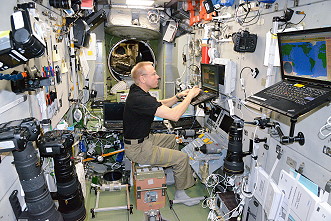 |
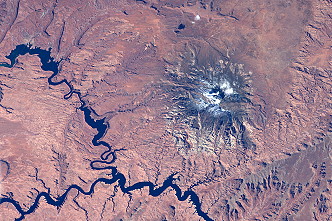 |
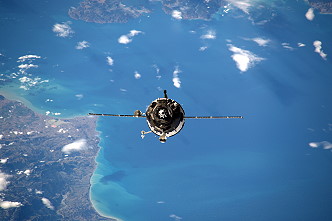 |
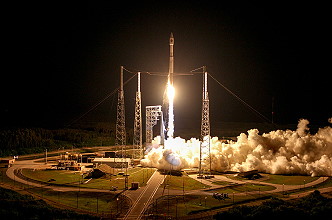 |
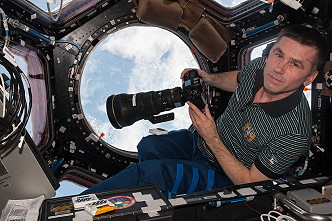 |
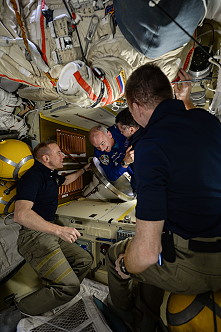 |
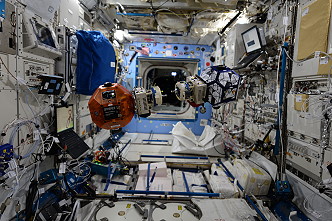 |
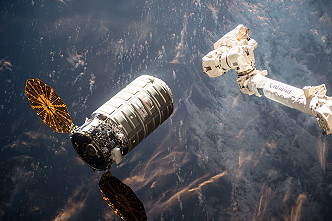 |
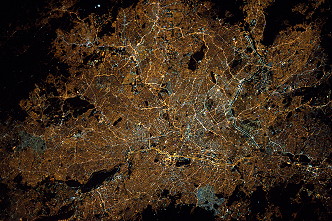 |
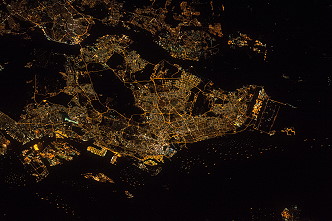 |
 |
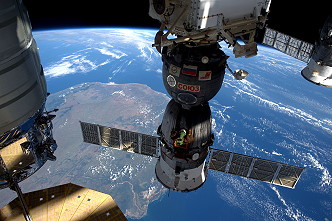 |
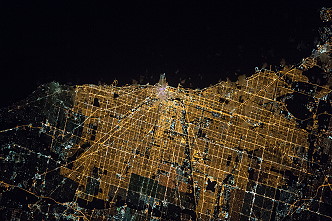 |
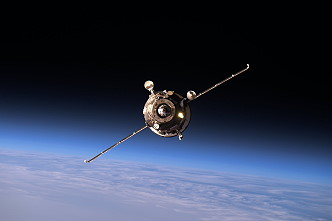 |
 |
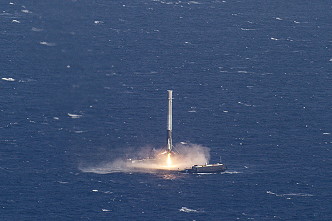 |
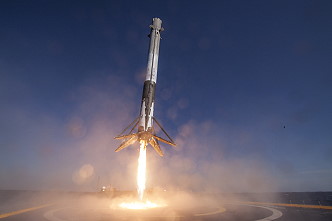 |
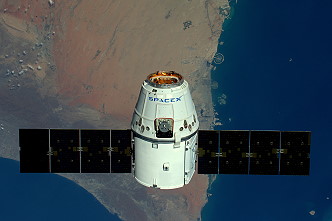 |
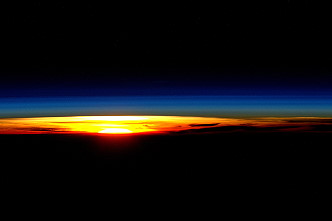 |
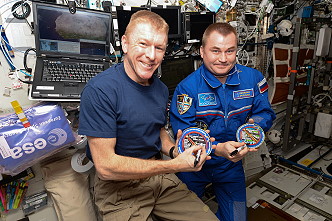 |
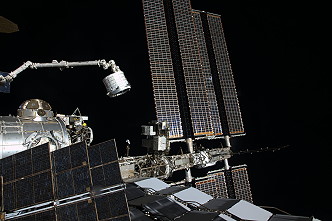 |
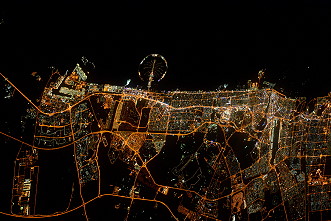 |
 |
 |
 |
 |
 |
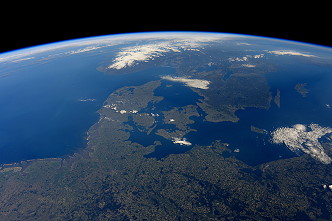 |
 |
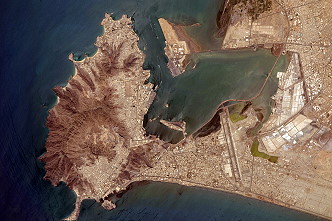 |
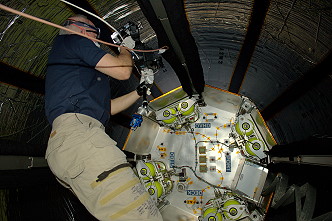 |
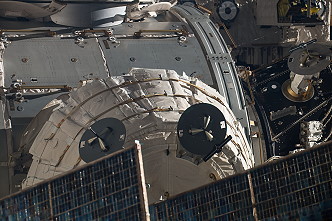 |
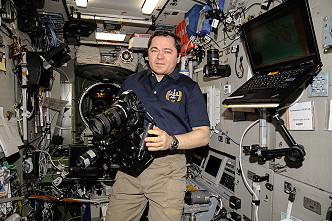 |
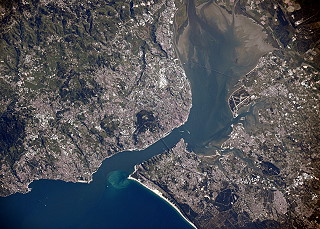 |
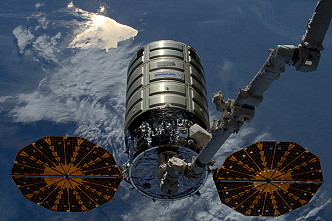 |
|
more Earth observation photos |
|
more onboard photos |
|
| © |  |
Last update on December 15, 2020.  |
 |